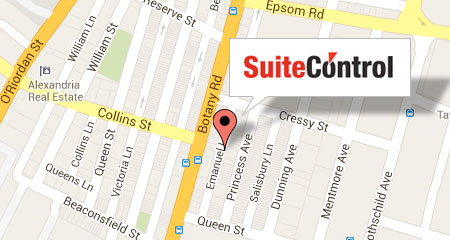What Is A Liquidity Pool? Which Means, Benefits & Dangers
When DeFi members perform a commerce utilizing this pair, they’re using belongings locked up in a pool. Basically, they add the asset that they need to promote to the pool while taking the one they need to buy out of it. Liquidity swimming pools facilitate velocity, and comfort to the DeFi ecosystem like decentralized buying and selling, lending, borrowing and different DeFi activities. Liquidity pools are the foundation of many decentralized exchanges (DEX), corresponding to Uniswap and Pancakeswap. While basic liquidity swimming pools type the foundation of DeFi trading, various DEX protocols make use of distinct algorithms to cater to totally different wants.

With rates of interest at historic lows, some buyers have begun wanting past conventional products like certificates of deposit (CDs), Treasury bonds for yield. There are multiple ways for a liquidity supplier to earn rewards for offering liquidity with LP tokens, including yield farming. In traditional finance, liquidity is supplied by buyers and sellers of an asset. A decentralized trade (DEX) without liquidity is equivalent to a plant without water. For traders, the advantages of elevated liquidity embody decreased slippage and quicker transactions. In illiquid markets, trades could be subject to slippage, the place an order can’t be stuffed at a single value in its entirety.
How Do You Take Part In Liquidity Pools?
To exit a crypto liquidity pool, providers can claim their asset contribution by burning their LP tokens. After burning their LP tokens, liquidity suppliers lose their right to earn shares of the pool’s buying and selling fees. A liquidity pool must be built in such a means that rewards crypto liquidity providers who stake their belongings in a pool. Hence, most liquidity providers earn buying and selling charges and crypto rewards from the DEXs they provide liquidity for. When a person stakes their assets in a liquidity pool, such person is usually rewarded with liquidity supplier (LP) tokens. Crypto liquidity swimming pools are crowdsourced funds of crypto coins and tokens locked in a wise contract.
This can result in buys being executed at greater prices and sells being executed at lower prices. More liquidity additionally means sooner transactions, as there are more funds to go around. Centralized exchanges are based mostly on order e-book administration techniques to coordinate trades and guarantee instant transactions. However, implementing a traditional order guide administration system in decentralized finance systems leads to sluggish transactions and poor consumer expertise. As on-chain transactions require fuel fees for interplay, updating orders would be incredibly expensive.
Some DeFi platforms provide extra incentives for customers to lock up tokens within the pool. This may be carried out by providing extra tokens for special “incentivized” swimming pools. Being a participant in these pools and getting as many LP tokens as possible is called liquidity mining. This one change helped allow DeFi’s explosive growth of over the last several years, because it gave decentralized exchanges a method to offer liquidity using crowdfunded swimming pools and algorithms. Those who present liquidity usually obtain a variety of LP tokens proportionate to the quantity of funds they’ve given to the pool. Each time a trade is facilitated utilizing that pool, a portion of the trading fee is split up and given to those that hold LP tokens.
What’s The Function Of A Liquidity Pool?
Lastly, the introduction of liquidity swimming pools led to the invention of different DeFi services. For instance, some decentralized functions now provide blockchain insurance coverage, and there are additionally artificial assets that users can trade in a fully decentralized manner. On the opposite hand, the same crypto enthusiasts can be part https://www.xcritical.com/ of DeFi as liquidity suppliers to facilitate trading and earn passive income. Instead of trading fees going to central governing authorities, they go to common traders, buyers, and other crypto enthusiasts. Liquidity swimming pools allow users to purchase and promote crypto on decentralized exchanges and different DeFi platforms with out the necessity for centralized market makers.

Liquidity pools supply incentives to buyers in change for locking up tokens in the pool. Most often, incentives come in the form of trading fees from the change that makes use of the pool. When somebody provides liquidity to a pool, they may acquire a liquidity supplier (LP) token for doing so. The tokens themselves may be useful, but also produce other features contained in the decentralized finance (DeFi) ecosystem. Simply put, whereas each order books and liquidity pools are related to liquidity, they feature utterly completely different mechanisms.
Difference Between Crypto Liquidity Swimming Pools And Conventional Solutions
A main element of a liquidity pool are automated market makers (AMMs). An AMM is a protocol that uses liquidity pools to allow digital property to be traded in an automatic method quite than through what is crypto liquidity a standard market of consumers and sellers. The significance of liquidity swimming pools within the field of decentralized finance cannot be understated.
Order books rely on market makers to offer liquidity and decide costs by way of buying and selling. DeFi exchanges characteristic pre-funded pools where asset costs are governed by algorithms. Thanks to a software innovation known as automated market maker (AMM) algorithms, liquidity swimming pools keep truthful market value for all their tokens routinely. For instance, many DEX’s make use of a “constant product formula” to maintain token price ratios.
This system automates itself because customers are incentivized to provide liquidity in exchange for rewards. A liquidity pool is a provide of cryptocurrencies or tokens locked in a sensible contract to have the ability to hold a decentralized change (DEX) liquid for trades to be executed. Liquidity pools enable users to pool their belongings in a DEX’s smart contract to supply liquidity for merchants to swap between currencies. Large pools have a lower danger of slippage as they can accommodate larger transactions without nice modifications in prices. DeFi exchanges due to this fact incentivize liquidity providers to lock more tokens in crypto liquidity swimming pools. In a commerce, merchants or traders can encounter a difference between the expected worth and the executed worth.
Coinmanufactory Review: How It Stacks Up Against Token Tool
DAI/ETH is a good instance of a preferred liquidity pool on a DEX like Uniswap. Some platforms, like Yearn.finance, can automatically transfer user funds to different DeFi protocols in accordance with a user’s most popular threat tolerance and desired reward. That concludes today’s lesson on liquidity swimming pools, that means you’re now ready to go and start earning some passive earnings. Ultimately, order books exist in centralized environments and want giant markets to operate properly. Liquidity swimming pools are typically decentralized and automated, offer much less slippage, and may be extra privacy-oriented since there’s no public ledger with open orders.

Liquidity providers must present an equal worth of both coins to the respective pool to find a way to realize their rewards. As an equal value of each crypto currencies is added, the liquidity pool’s composition just isn’t modified. Thus, liquidity provisions do not influence the charges at which the coins within the pool may be traded. The good contracts that underlay these platforms sometimes have exploitable bugs in them. Because of the big profit opportunity, these protocols have turn out to be a main target for hackers. It’s clear that these swimming pools aren’t simply simple funds of belongings; they’re essential mechanisms that permit the world of DeFi to thrive.
Liquidity Pools Explained: Simplifying Defi For Newbies
At some point, the invention of a liquidity pool was launched, giving customers an incentive to supply liquidity and removing the necessity to match buyers with sellers utilizing an order guide. This means it’s the center point between what sellers are prepared to sell the asset for and the value at which patrons are willing to buy it. However, low liquidity can incur more slippage and the executed trading price can far exceed the unique market order worth, depending on the bid-ask unfold for the asset at any given time. Any seasoned dealer in conventional or crypto markets can inform you about the potential downsides of entering a market with little liquidity. Whether it’s a low cap cryptocurrency or penny stock, slippage might be a priority when making an attempt to enter — or exit — any commerce. Slippage is the difference between the expected price of a trade and the worth at which it’s executed.
The advantages of algorithm-governed prices and liquidity have been confirmed over time. Learning tips on how to verify these liquidity pools is easy, as most of them are readily available on platforms’ websites. Before investing, make certain to examine a few completely different pools to search out the one that suits you best. Liquidity pools not directly enhance market decentralization and monetary democratization. On the one hand, they permit retail investors to trade with out the assist of centralized third parties and traditional monetary entities. That ends in better inclusion since some traders won’t have access to conventional markets while they solely want an internet connection to join DEXs.
The liquidity pool goals to remove the problems of illiquid markets by giving incentives to its customers and offering liquidity for a share of buying and selling fees. Basic liquidity swimming pools typically contain two assets, with liquidity suppliers (LPs) locking equal values of each belongings into the pool. In change for this service, LPs obtain rewards within the form of buying and selling charges and governance tokens. Unlike conventional centralized exchanges that rely on order books, crypto liquidity swimming pools employ a decentralized strategy to asset pricing.
A liquidity pool is a group of cryptocurrency funds grouped into a sensible contract. This good contract supplies customers of decentralized exchanges (DEXs) with entry to liquidity for his or her trades. Rather than traditional order books containing purchase and promote orders, most DEXs use automated market makers (AMMs) to facilitate trades routinely by way of liquidity pools. These swimming pools serve as decentralized repositories of crypto assets, managed by good contracts that automate asset pricing and facilitate transactions with out the need for intermediaries.
That would result in slower orders and slower transactions, creating sad clients. As of January 2022, roughly 1.7 billion adults worldwide have been estimated to be unbanked, according to data from the World Bank’s Global Findex database. In other words, close to one-quarter of the world’s inhabitants doesn’t have an account with a financial institution.








